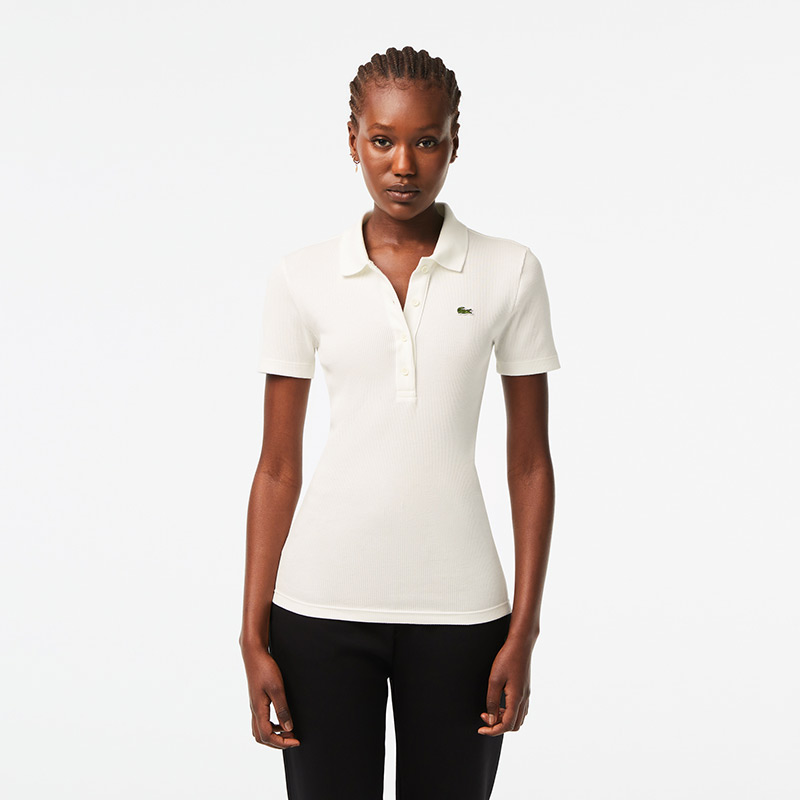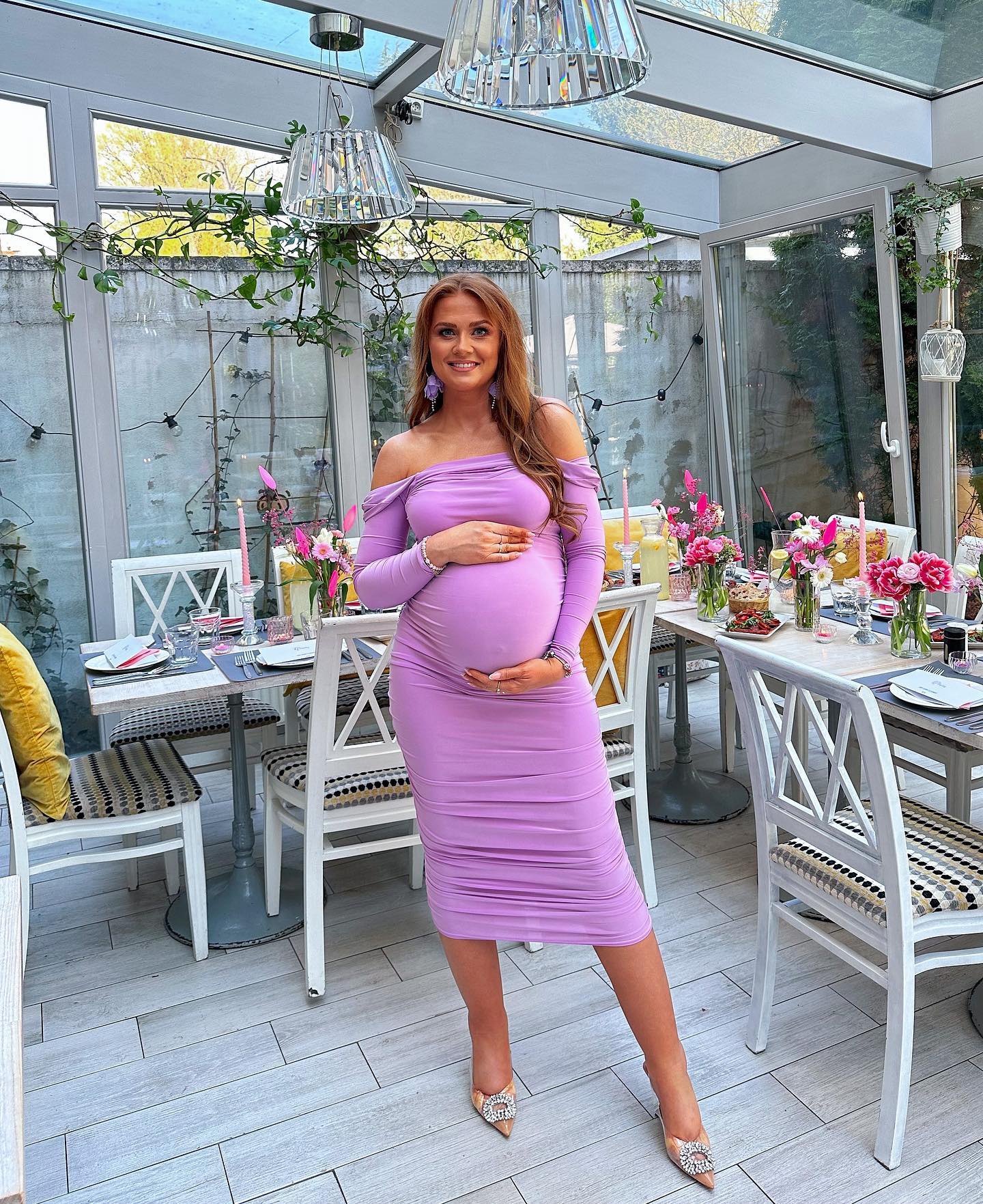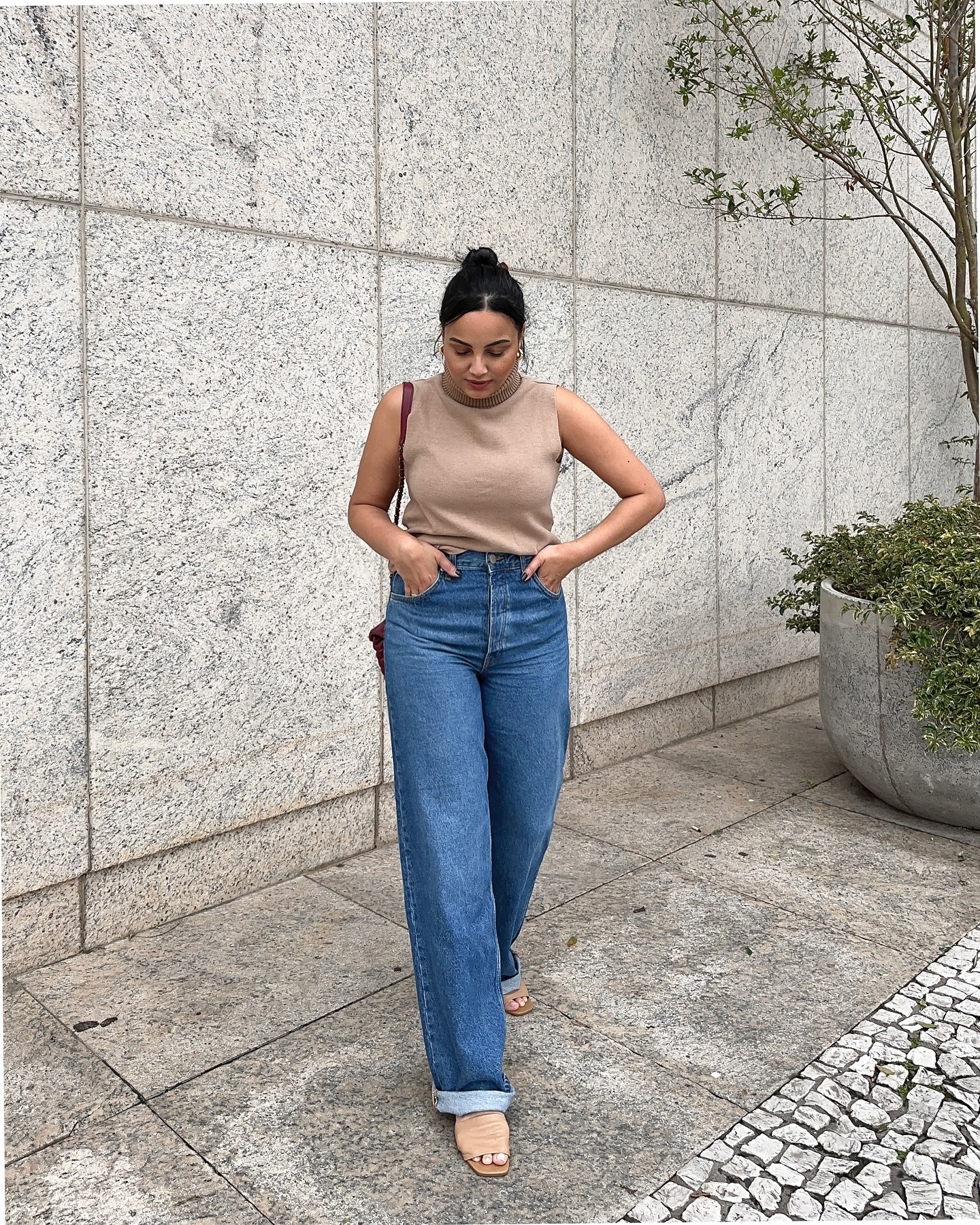Disclaimer: This article contains affiliate links.
French clothing brand Lacoste is the darling of tennis players, with its iconic Lacoste polo shirts often spotted on players and fans alike. Lacoste’s association with tennis and the upper-echelon fans of the game has earned Lacoste a reputation as a high-end brand.
But is Lacoste a luxury brand?
How would you define luxury, and how does it set apart from other luxury brands?
That’s what we’ll explore in this article.
Is Lacoste a luxury Brand?
Luxury or premium brand? It really depends on who you ask.
Some would say Lacoste qualifies as a luxury brand thanks to its high-quality products and close ties to the tennis elite. Lacoste polos are made from sturdy, high-quality materials that are supposed to stand the test of time.
Others, however, would disagree, citing the affordable prices and wide accessibility of its items as the reason why it shouldn’t be considered a true luxury brand but just a tennis court favorite.
One thing most would agree on is that the brand has maintained an impressive presence in the fashion world for almost a century.
We’ll dive deeper into this question in the following sections.
Lacoste’s Most Popular Iconic Products
Lacoste has maintained its iconic status for almost a century. This is thanks to its classic designs, luxurious materials, and wide product range that doesn’t stick just to the iconic polo shirts.
Sporting the famous green crocodile logo, Lacoste continues producing good quality products that are widely available in department stores and online. This french company has expanded beyond the borders of United States and is widely available in Europe or even Asia.
Here are our absolute favorite items that have made it into our Lacoste Hall of Fame.
1. The Classic White Soft Cotton Petit Piqué Polo
If there is just one product that’s a staple in the Lacoste brand, it’s definitely this timeless white polo!
2. Slim Fit Organic Polo Shirt
If you prefer a more snug fit for your polo, this shirt made from organic cotton looks fantastic and on trend.
3. The Original 80s White Croc Polo
The true classic that never gets out of style – this 80s croc polo has a more loose fit, perfect for activewear.
4. Organic Cotton Terry Polo
In a beautiful off-white shade, this is a true classic in a modern fabric edition with a hip style.
5. Classic Tennis Jacket
Made from recycled materials with pretty trim around the shoulders, this classic statement jacket will take you beyond the tennis court.
6. Color Blocked Classic Tennis Dress
Iconic tennis dress with removable shorts and absorbent flexible fabric that will get you moving.
7. Lacoste Concept Zip Tote
Whether you need a shopping bag or something to take to the office, this zip tote is the perfect choice for both cases.
8. Classic Front Print Lacoste Tote
A more classic take on a tote bag, this elegant version with a vintage-inspired logo at the front provides plenty of space and infuses your outfit with style.
9. Classic White Leather Sneakers
This Carnaby sneaker takes the classic elements of the Lacoste brand into a new modern world.
10. Classic Stretch Cotton Socks
Short solid socks with contrasting branding at the base.
Defining Luxury in the Fashion Industry
The definition of what makes a luxury brand will vary depending on who you ask. But, there are some features that all top-tier fashion houses have in common.
Luxury brands are all about quality. Quality materials, quality tailoring, and quality designs. After all, with a sizeable price tag comes big expectations. Therefore, any label that wants luxury status must use only the best fabrics, designers, and manufacturers.
You’ll often see hand-stitching, custom tailoring, or intricate embroidery featured in luxury brand collections, which is a level of attention to detail cheaper labels simply can’t obtain.
Luxury brands must also be top of the class when it comes to designs. They’re the trendsetters, so innovation is the key.
We can’t talk about luxury brands without mentioning exclusivity. Top-tier fashion houses are all about one-of-a-kind, limited edition, and aspiration products that not just anyone can have.
High price tags and limited manufacturing of garments help to keep that air of exclusivity.
Brand reputation is another significant factor. Luxury brands must earn their prestigious status by maintaining a long legacy of excellence. Without this, customers simply aren’t going to fork out big bucks for their garments.
Lacoste’s Legacy: Beyond a Tennis Shirt
Let’s take a trip down memory lane and learn a thing or two about the rich history of this designer brand.
Lacoste has been closely linked with sportswear and tennis since it was founded. René Lacoste, a world-class tennis player, had the idea of creating high-quality polos for the sport. To make this dream a reality, he partnered with a French knitwear company with strong reputation for quality.
René was already well known in the tennis world, helping the brand take off right away.
People trusted his word as an authority on tennis attire, and his lightweight polos were an ace (forgive the tennis pun).
People also loved the iconic crocodile logo on the polo shirts, and the casual clothing style that was a perfect fit for athletic wear.
There’s actually a pretty funny story behind the crocodile logo, which began with a bet between René and his captain.
René’s captain agreed that he would gift him a crocodile suitcase if he won a match. Unfortunately, he didn’t win but still got the suitcase as a symbol of his tenacity (and earned himself the nickname “the crocodile”).
The nickname stuck, and René had a crocodile sewn onto his tennis shirts from then on and lacoste’s logo was born.
Lacoste has continued to grow, now carrying fragrances, eyewear, leather goods, luggage, and accessories.
Throughout this, though, it has kept close ties with the tennis industry.
Brand Evolution: History of Lacoste
In the past century ninety years, Lacoste has successfully made the transition from a sports-focused brand to a lifestyle brand. Here’s a brief history of its evolution.
In 1933, the world-renowned tennis player René Lacoste teamed up with a French knitwear brand to make polo shirts. Lacoste’s vision was to produce lightweight polos that enhanced performance. These polo shirts made the history books as being the first clothing line to be produced with a logo.
By the fifties, Lacoste clothing was being sold on a global scale.
1968 saw the brand launch its first Eau de Toilette, a fragrance created in collaboration with prolific French perfumer and designer Jean Patou.
A decade later, Lacoste launched its first-ever Lacoste eyewear collection, closely followed by leather goods. Lacoste made the smart decision to collaborate with French leather designers to ensure the quality of the products.
Brand recognition soared in 2005 when French designer Christophe Lemaire breathed new life into the brand. He introduced a modern twist on the signature Lacoste style and strengthened the brand’s connection with tennis by signing contracts with the best tennis pros in the world.
Since then, the brand has welcomed a new creative director Felipe Oliveira Baptista in 2010 and a new brand ambassador Novak Djokovic in 2017.
Today, Lacoste can be found in boutiques across the globe and the timeless design continues to impress not just tennis fans.
Assessing Luxury Elements in Lacoste
Let’s revisit our original question: Is Lacoste truly a luxury brand?
In this section, let’s take a closer look at the luxury elements of the label, including price, materials, and craftsmanship, to answer this question.
Quality and Craftsmanship
Lacoste uses pretty standard materials for its clothing, including rayon, wool, cotton, polyamide, and good old polyester. For handbags it utilizes relatively inexpensive fabrics like PVC or split cow leather (a cheaper alternative to lambskin).
These fabrics may be durable and wear well, but they aren’t luxurious.
When we think of high-end luxury brands, silks, linens, or buttery soft leathers usually come to mind.
Lacote’s fabric choices focus on durability, functionality, and comfort, but we wouldn’t classify them as luxurious or high-end.
Despite this, Lacoste’s craftsmanship elevates the brand. The brand has been praised for the quality of its products, most of which are made in France to maintain a consistently high standard.
Brand Heritage and Legacy
The Lacoste crocodile logo is a pretty great symbol of the brand’s longevity. Its steadfast connection with tennis helped the brand form an authentic identity.
Staying relevant for over ninety years is certainly a sign of a top-tier brand and quality products.
Exclusivity and Limited Editions
Lacoste has worked hard to build a sense of exclusivity around the brand by releasing limited-edition collections and collaborations with high-profile tennis stars.
Associations with world-class athletes like Andy Roddick have helped to create an aspirational feeling around the brand despite accessible prices.
Perception and Criticism
Over the years, several incidents have dented Lacoste’s standing as a luxury brand.
The brand has been blasted for its sustainability rating, with many critics accusing Lacoste of skimping on its social responsibility.
In response to these accusations, the brand pledged to reduce the environmental impact of its operations by 2025.
On top of this, it has implemented strategies to extend the durability and recycle leftover items.
Putting its money where its mouth is, Lacoste launched the “LOOP Polo“ line. The idea behind the line is that 30% of the classic fit polo is made using excess garments.
Customer experience is another area where the brand falls short. When we think of luxury brands like Louis Vuitton, we think of impeccable service. Unfortunately, Lacoste receives mixed reviews from customers.
Lacoste has received complaints about slow response times, sizing issues, and generally poor customer service. This prompted it to roll out a series of open-concept stores that use immersive technology to improve the customer experience. It also outsourced customer service strategies in another attempt to remedy these issues.
Mass production, outsourcing manufacturing, and the brand’s wide stream availability have also hurt its luxury status.
When compared with luxury brands like Prada, Lacoste also falls short in terms of couture and avant-garde runway shows.
Finally, Lacoste’s expansion into footwear, fragrances, accessories, etc., has led some critics to argue it has diluted the brand’s once-strong identity.
Balancing Accessibility and Exclusivity
Lacoste’s tiered pricing strategy has made it accessible to a broader audience and allowed it to expand its loyal customer base.
Customers can find products in various price regions, and even more expensive items are relatively affordable compared to other brands.
For shoppers looking for that high-end experience, Lacoste collaborates with worthy designer brands to offer limited-edition items (with higher price tags).
Lacoste decided to become more accessible in the eighties to compete with Polo Ralph Lauren. This involved cutting costs and selling its polos in a broader range of stores. The plan worked, and profits skyrocketed.
However, not everyone viewed Lacoste’s decision to be more accessible as a positive move. By becoming more accessible, Lacoste hurt its reputation as a luxury brand.
It ended up being perceived as a cheaper version of Ralph Lauren, which was not the plan.
The brand is making moves to recover, but the resale value of Lacoste products is still low compared to other luxury brands.
Contemporary Luxury: Changing Paradigms
There has been a massive shift in customer preference, behaviors, and attitudes in recent years, leading to a significant change in how we perceive luxury brands.
For a start, today’s fashion consumers care more about the effect of fashion on the planet.
The fashion industry has been slammed for years for its negative environmental impact and has been relatively slow to take heed. But this is changing.
Sustainability and ethical practices are now top priorities for leading fashion houses, with some experimenting with ethical materials to replace leather, diamonds, and fur.
Contemporary luxury brands are now receiving pressure to be more inclusive and representative. Modern consumers want to see couture clothing that fits a wide range of body types and identities.
Conclusion
We’ve weighed up all the factors, and Lacoste is what’s known as “an accessible luxury brand”, similar to Calvin Klein or Hugo Boss.
This means that it offers well-made products but uses inexpensive materials. As such, the French label is a great brand to start with if you’re new to luxury design houses.
More Fashion Topics
17 Best Kate Spade Bags for Work [2023]
30 Best Brands Similar to Kate Spade for Affordable Chic Handbags
















